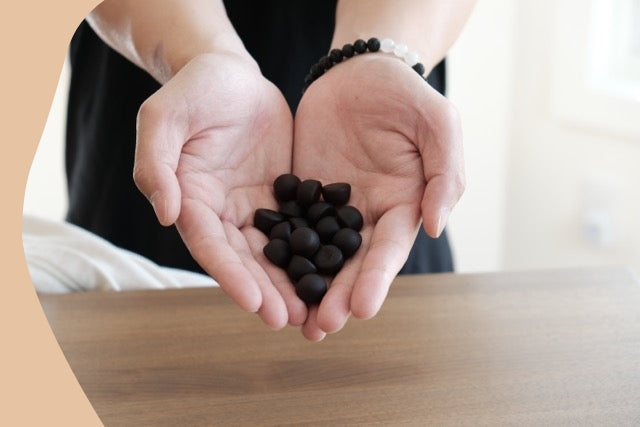
6 Powerful Exercises to Ease Anxiety
Anxiety is something that all of us deal with from time to time. At best, it’s unpleasant and makes our life more difficult than necessary. At its worst, anxiety can be crippling. It can impact all areas of our lives, including work, social activities, sleep quality, and even our health.
One of the best ways to handle anxiety is by using an anxiety exercise.
These methods vary.
For example, physical exercise is a good distraction from anxious thoughts, but this isn’t practical for everyone. What works for you and someone else may vary. And this is why we have six powerful exercises to ease anxiety that you can try out and see if they help!
Below, we’ll discuss six anxiety-reducing exercises, each one proven to help relieve anxious thoughts and ease the physical symptoms of anxiety.
6 Powerful Exercises to Ease Anxiety
1. Breathing Exercises
When you’re suffering from an anxiety attack, the advice to “just breathe” can seem to be annoying and completely unhelpful.
However, as anyone who’s suffered a panic attack will know, high levels of anxiety cause us to breathe faster and more shallowly. This means that your body isn’t getting enough oxygen. You may even find yourself holding your breath altogether, which can lead to dizziness and hyperventilation.
The key element of a panic attack is, well, panic.
This is where breathing exercises for anxiety come in handy. You need to interrupt your body’s panic, forcing yourself to breathe properly. This ensures that you’re getting enough oxygen. In turn, this can help settle your churning mind.
Breathing exercises are an essential part of calming anxiety and can be used alongside other exercises. Try this:
- Make yourself comfortable, and close your eyes.
- Inhale deeply through your nose, holding your breath for four seconds. Focus only on your breath and the counting, nothing else.
- Hold the breath for about six or seven seconds.
- Exhale. This usually lasts between four to eight seconds, although some breathing exercises have different timings. Choose the timing that feels best to you.
- Repeat.
To get the best out of this exercise, place your hands on your chest or stomach, somewhere that you can feel the breaths filling your lungs.
Try your best to stay focused, concentrating only on your breaths and how they run through your body. Repeat until you feel calm.
2. Relaxation Exercises
Anxiety can cause your muscles to tense up, causing pain and discomfort. Noticing these feelings can make them worse, as it stresses us out even more. However, you may not even realize just how physically tense you are until you relax.
Forcing tense muscles to relax can be difficult. A good way to deal with it is by “resetting” muscle tension.
Start by choosing a comfortable position, free of stress and distractions. You may want to try a breathing exercise first to ensure that you aren’t on the brink of a panic attack, then do the following:
- Clench your fist as hard as you can, holding it for a few seconds. Focus on this.
- Release your clenched fist. Try and notice the feeling of tension leaving the muscles in your hand.
- Repeat with your other fist.
- Now, start to work your way up to your body, tensing each muscle group for a few seconds, then releasing.
This should work to reset your muscles, draining away tension. It also gives you a focal point, away from the chaotic thoughts in your mind. You don’t need to start with your fists; start wherever feels best to you.
This shouldn’t be a physically painful exercise. If you already have an injury, avoid that area.
Make sure to read: Feeling Anxious? Try Progressive Relaxation
3. Running
Does exercise help anxiety? You may be skeptical. However, science indicates that it does.
Physical exercise releases endorphins, helping to clear your mind and increase your happiness. Going for a run, power walking, or cycling can help alleviate the physical symptoms of stress and anxiety, as well as keeping your heart and lungs healthy!
Of course, if you’re on the brink of a panic attack, you likely won’t feel inclined to lace up your running shoes and hit the pavement. However, when you’re dealing with more moderate levels of stress, why not give it a go?
For a beginner, it’s best to start with a mixture of running and walking, gradually building up your stamina. Set a time in your schedule when you intend to go for a run. And don’t forget to stay well-hydrated!
4. Yoga or Pilates
Yoga and Pilates are popular choices for many when managing stress and muscle tension. Combined with breathing exercises, they can go a long way in making you more focused (and flexible!).
As another “resetting” method, yoga involves holding various positions while keeping the mind clear and focused on your activity. Its benefit comes from mindfulness and stretching out the muscles.
For a beginner, you may want to start with the simplest yoga or Pilates routines and work your way up. They can be a lot harder than they look!
You might also love: A Yin Yoga Flor for Ultimate Relaxation
5. Visualizing
Relaxing by visualizing is a good way to derail a dangerous train of thought. Visualizing involves creating a mental image of a place you feel safe and secure. Whenever you feel your thoughts spiraling out of control, visit this place.
You might want to use a familiar place, perhaps a room from your childhood.
Or you could create a completely new situation. Either way, the key lies in the details. Focus on every aspect of your safe space. What would you see, what would you feel? What is the weather like? If you’re outside, can you feel the sun or breeze on your skin?
The more detail you invest in your safe space, and the more you return there, the easier it will become. It also helps to engage as many senses as possible to make it feel all that much more real.
6. Grounding
Grounding involves using mindfulness exercises for anxiety. You may have already noticed a theme in these anxiety exercises: distraction. When you feel anxious thoughts taking hold, you need to take action to distract yourself.
Grounding means that you immerse yourself in the present.
Start by focusing your awareness on your body – what can you feel, hear, see? Gradually shift your focus outwards to what you perceive around you. Feel free to move your focus back and forth between your body and your environment.
Tackle Anxiety & Live Your Life!
As all too many of us know, anxiety is a serious issue that affects many people today. However, you can overcome it. It may take time, effort, and practice, but you can do it!
Give the six anxiety exercises above a try.
Do you feel better afterward? Keep track! Sometimes, writing down in a journal can help remind you how certain actions made you feel so that you can revisit them and continue to navigate your life with greater ease.
Related article: 8 Journal Prompts for Overcoming Anxiety






